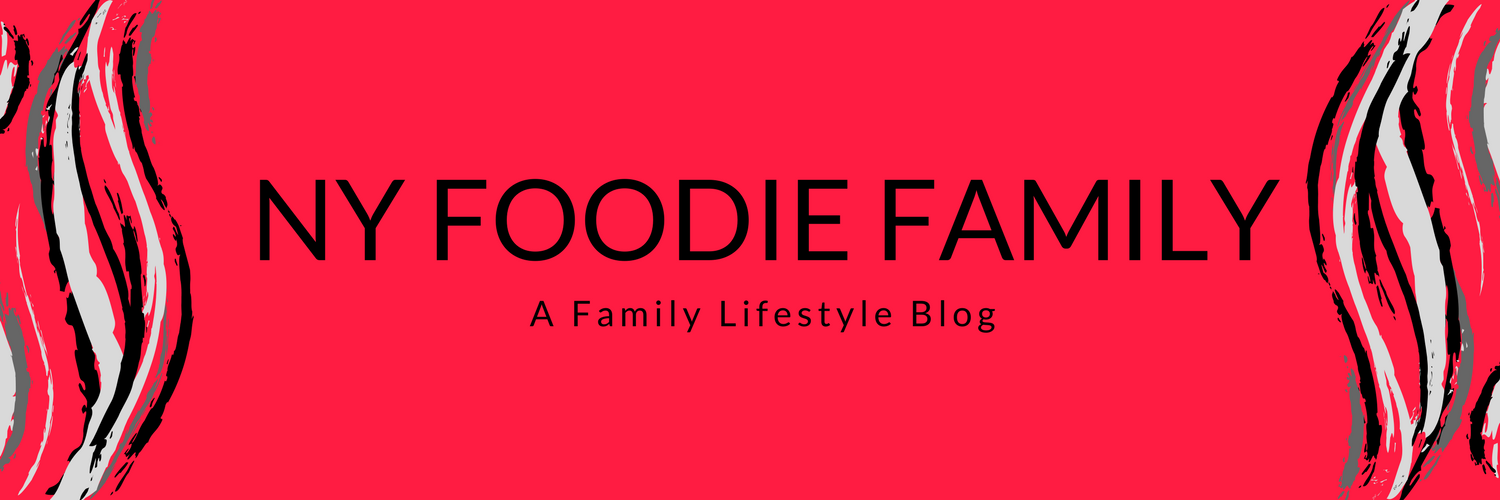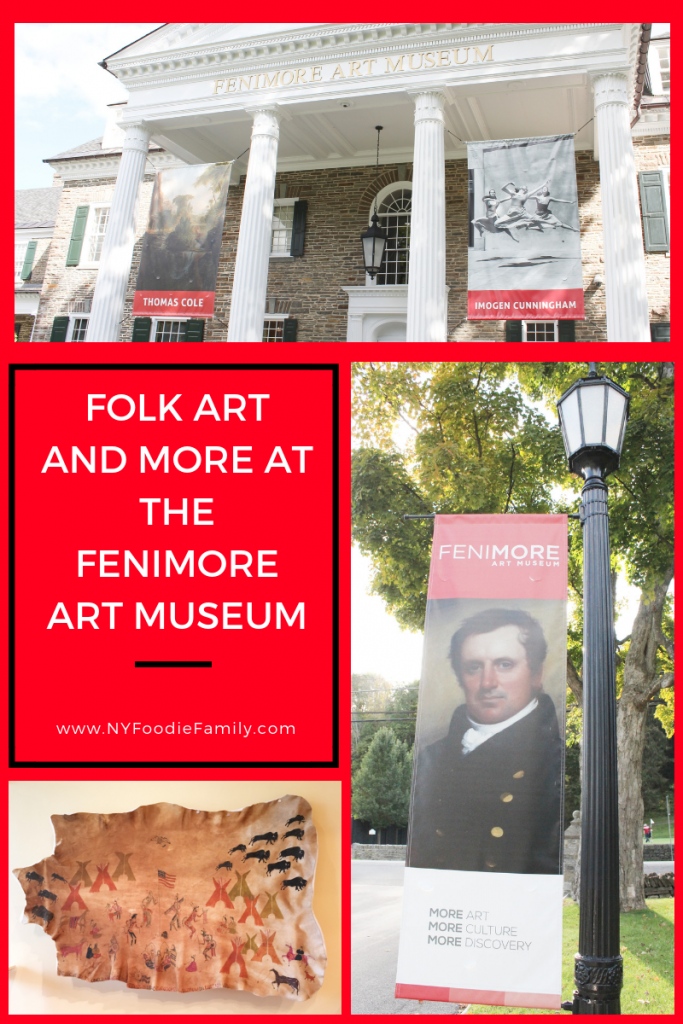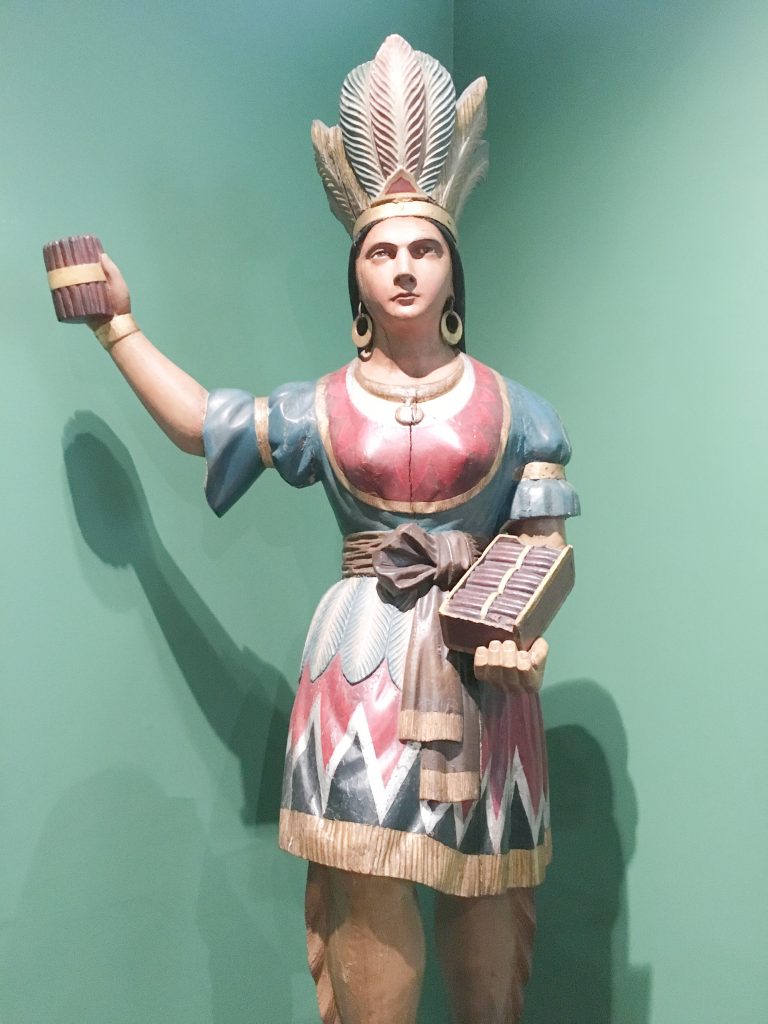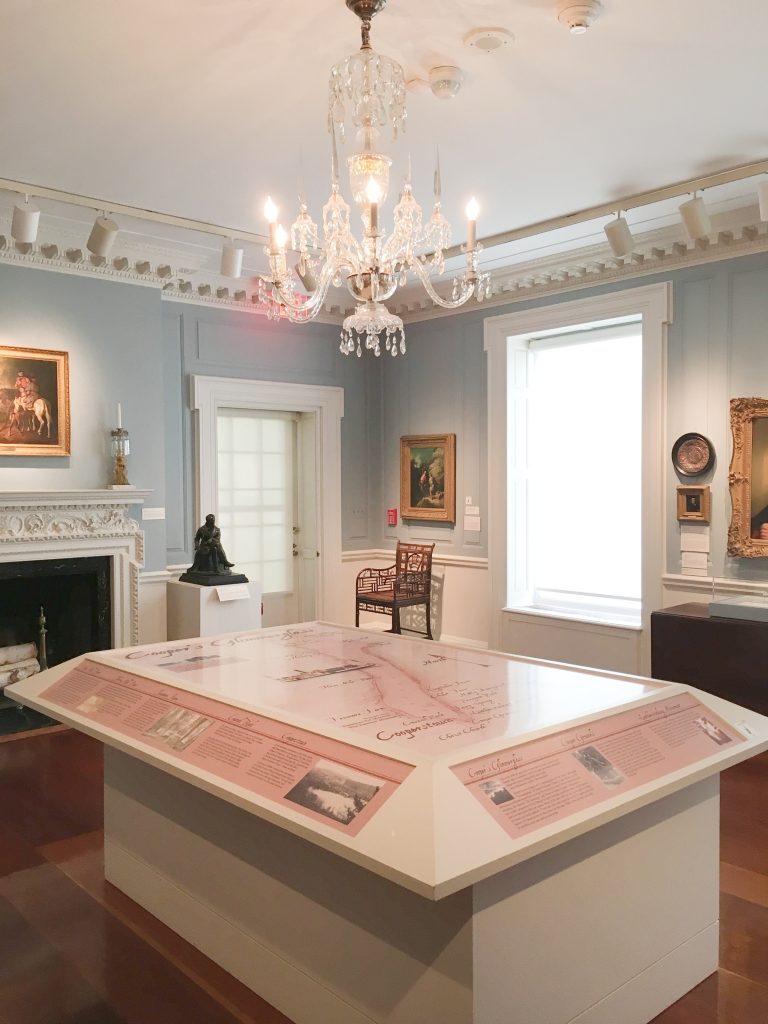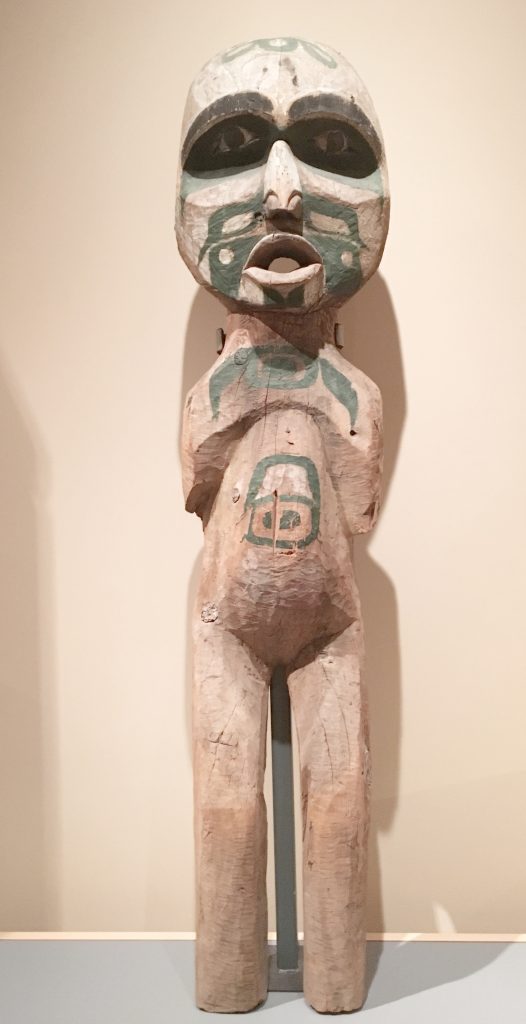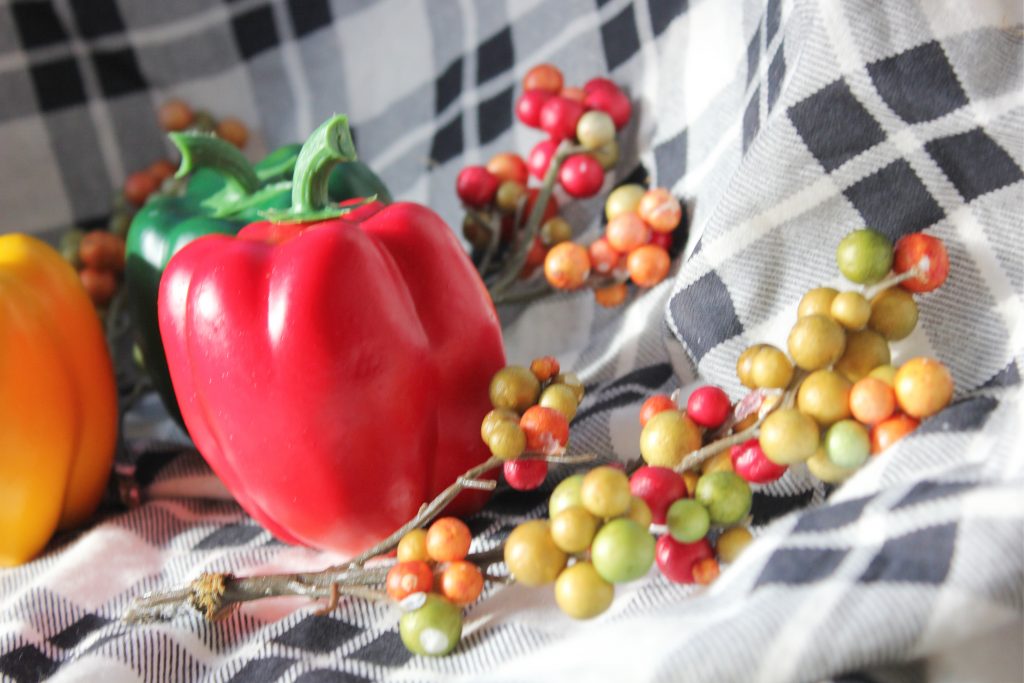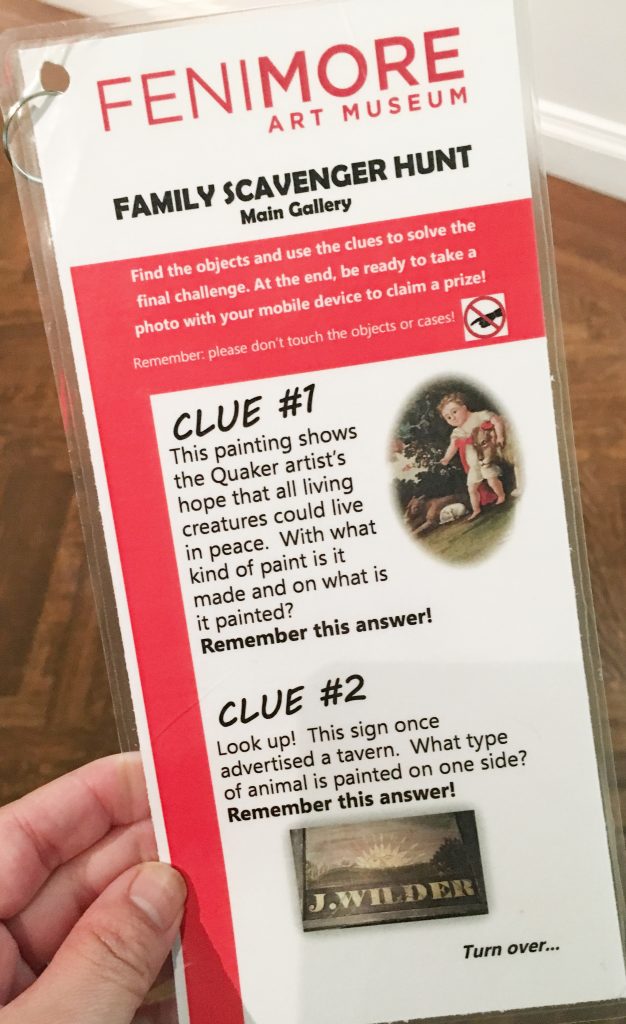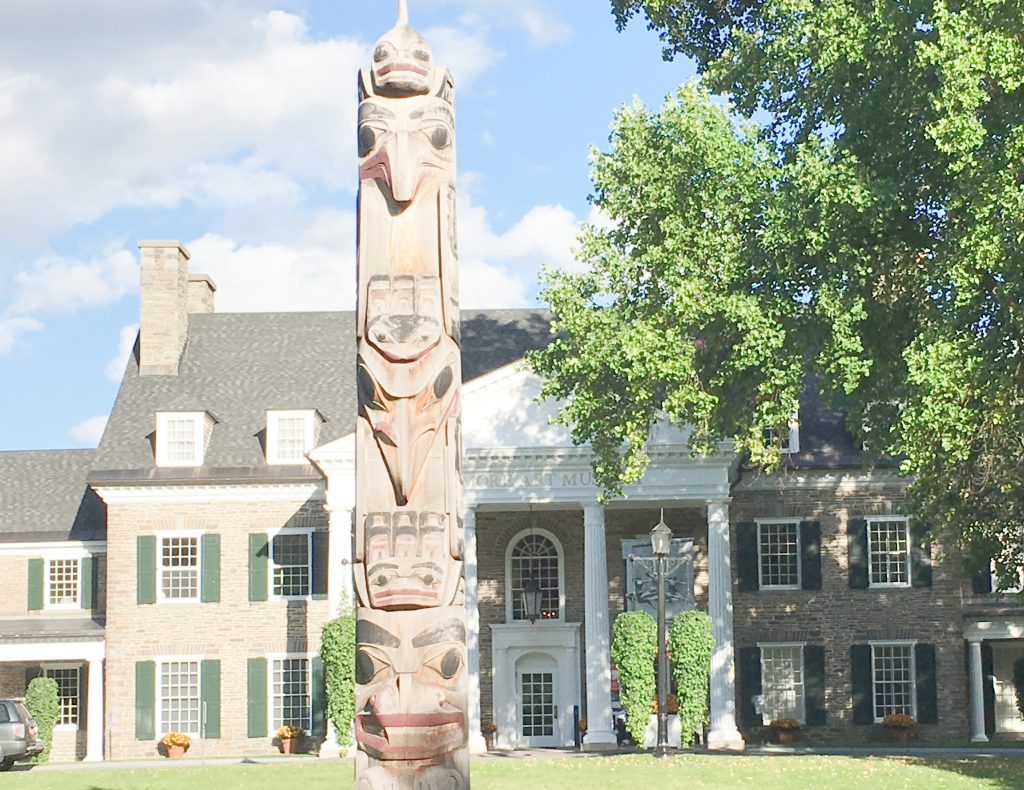(Thank you to Go Cooperstown and the Fenimore Art Museum for hosting NY Foodie Family. As always, all opinions are our own.)
Driving by the Fenimore Art Museum, located on Route 80 in Cooperstown, you might assume it’s a giant mansion. And you’d be right. Avid art collector Stephen Carlton Clark donated Fenimore House to the New York State Historical Association for its new headquarters and museum in 1939. The museum’s origins date back to 1899. The country estate of Clark’s late brother was built on land that was once owned by James Fenimore Cooper. Today, it houses a large collection of American Folk Art and Native American Art.
The first floor of the museum includes the Main Gallery, which has one of the largest folk art collections in the country. The art includes Indian Maiden (pictured above) a Cigar Store Figure, paintings, weather vanes, carvings and more.
The Cooper Gallery is also located on the main floor. For more than seven generations, the Cooper family has had ties to the Lake Otsego area. The most well known Cooper is probably American writer, James Fenimore Cooper. His book, The Leatherstocking Tales, features the iconic story The Last of the Mohicans. This gallery displays many of James Fenimore Cooper’s personal effects and possessions.
The lower level of the museum houses the Thaw Gallery of American Indian Art. Eugene and Clare Thaw, residents of Cherry Valley in Otsego County, were avid art collectors and dealers. In the late 1990’s the couple moved to Santa Fe, New Mexico and and began collecting Native American Art. They amassed a large collection over the years and donated their entire collection to the Fenimore Art Museum. New objects have been added to the collection, which now numbers over 850 pieces. Also on the lower level are several galleries that host the various temporary exhibitions.
My husband and I both agreed that our favorite exhibit at the museum was the temporary exhibit Seen & Unseen: Photographs by Imogen Cunningham. Photography was not allowed in this exhibit. However, Cunningham (1883-1976) was considered an experimental photographer and one of the pioneers of the art. Her photographs on display reflected this, covering a depth and breadth that was truly amazing.
We found the Education Room, up on the second floor near the end of our visit. With comfortable chairs, my husband and I sat and relaxed, perusing some of the library of art books. The kids enjoyed sitting at the tables drawing and had even more fun using the photo station to create still lifes and practice their photography skills (my son’s picture is above).
Also on the second floor were additional temporary exhibitions including Hamilton’s Final Act: Enemies and Allies, The Barber Surreal: Eugene Berman’s Reimagined Barber of Seville and Thomas Cole and the Garden of Eden. As you can tell from just the names of the exhibits, the Fenimore showcases a wide variety of art.
Along with the Education Room, the kids really enjoyed the family scavenger hunts. The Fenimore Art Museum has two different scavenger hunts. One’s in the Main Gallery and one is in the Thaw Gallery of American Indian Art. These scavenger hunts make the kids take a closer look at the different works in the gallery to gather their clues. There is a fun prize at the end of the scavenger hunt.
The back of the museum overlooks Otsego Lake and has beautiful views. We were prevented from accessing the rear areas on the day of our visit, as there was a wedding ceremony taking place. But, on a normal day, you can walk around the outside grounds. We were able to walk the property in front of the museum and see the giant Haida Totem Pole. The museum acquired this totem pole in 2010, after Eugene Thaw commissioned the work from Haida artist and carver Reg Davidson. The pole, standing 3o-feet tall, sits on the front lawn of the museum.
The Fenimore Art Museum is a community museum. Not only does it house the exhibitions described above, but it offers lecture series, community exhibitions, painting and photography workshops and more. Although the museum is small, the changing exhibits and special program offerings, give visitors many reasons to return.
The Details:
Fenimore Art Museum
5798 Route 80
Cooperstown, NY 13326
FenimoreArt.org
Hours: May 8 – October 8, daily 10 AM – 5 PM October 9 – December 30, Tues. – Sun. 10 AM – 4 PM, Closed Mondays, Thanksgiving and Christmas.
Admission: $12/ Adults and Juniors (13-64), $10.50/Seniors (65+), Free/Children 12 and under
Parking: Free parking along driveway in front of the museum and and side lot
Tips:
*Plan to spend approximately 1 1/2 hours or less on a visit with kids.
*You can purchase food at the Fenimore Cafe, which is open seasonally.
*Docent tours are available daily May 26 through September 3 and Saturdays and Sundays March 31 through May 25 and September 24 through December 30. They last approximately 4o minutes. Check the website or admission desk for times.
